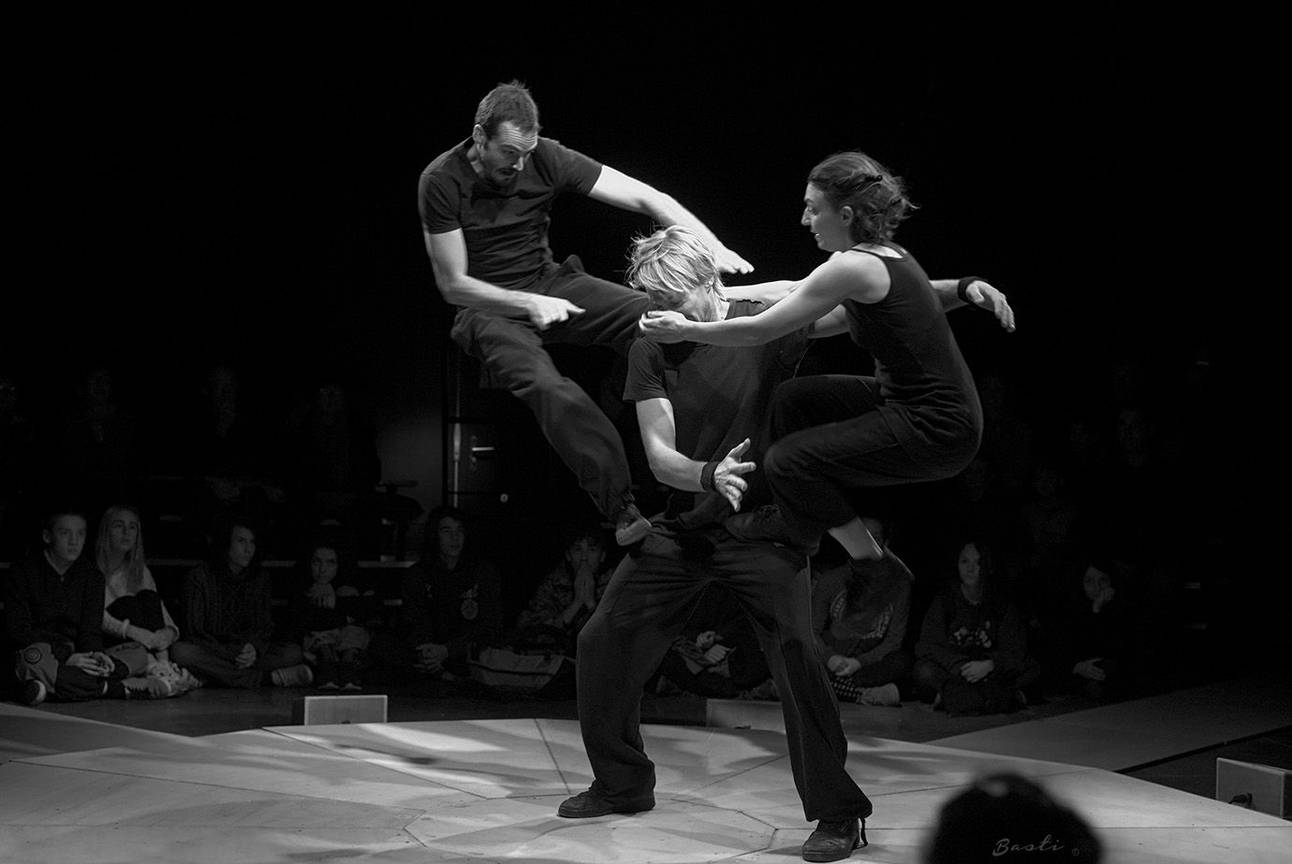The acrobats Thibaut Lezervant, Julien Pierrot, and Sonia Massou, together with the scenic artist Cécile Massou, formed the Collectif Rafale out of a desire to develop a new language for the stage. Their Sanctuaire sauvage is a journey of the senses.

© Sebastien Pignol
Collectif Rafale: The sound of bodies and of rain
It was by thinking about the perceptions and experiences of their nonsighted father that Sonia and Cécile Massou, two of the founders of the Collectif Rafale, came up with their first mind-bending show that plays with the perceptions of the spectator.
Did the idea for Sanctuaire sauvage come from your nonsighted father’s perception of “seeing” you practice your art?
Sonia Massou: Yes, it did. My father came to see some of my shows where he would fall asleep because they weren’t interesting to him. It was just circus technique set to nice music. For him, nothing was happening. There was only the frustration of hearing people applaud without knowing why. Then one day, he came to see me in Stockholm where I was attending a circus school. My friends and I experimented with ways of sharing what we were doing with him. The juggler juggled over his head so that he could hear the sound of the balls. We encouraged him to try out several activities, such as trampolining, and that’s when the idea came to us to do something that would be accessible to blind people.
How did the idea develop?
Massou: We also drew on the accounts of nonsighted people, which inspired some of the scenes. For example, John Hull, a man who lost his sight at the age of 40, said that the sound of the rain falling on the lawn in his garden was not the same as the sound of the rain falling on the cobbles or on the trees. For him, it was as if the space was opening up. In that moment, he experienced the space in a different way from when he had his sight. We drew inspiration from that statement to research how to provide that sensation of the rain and of a space opening up to an audience of sighted people.
Is sound very important in your method?
Thibaut Lezervant: We worked with the sound of bodies falling or moving in space. We also wanted genuine proximity so that the spectator could practically touch the two acrobats as they performed. We have a circular stage, four metres in diameter, which is small for circus. The audience is right beside it and the sound is amplified with microphones to pick out every possible nuance.
There is also some impressive use of lighting.
Julien Pierrot: Obviously, the entire show doesn’t take place in the dark. What we’re interested in is exploring the relationship between sight and the other senses, which are used too little in circus. At some moments, we will blur what the audience sees; at others, they won’t be able to see at all, and at others, there will be fog or flashes. It’s about light, not darkness. It’s an interplay between what we allow to be seen and what we leave in the dark. So it’s also visual, but it’s not only visual.
Why Sanctuaire sauvage?
Massou: It’s inspired by recordings of the sounds of animals in nature made over years by a musician who had become blind, which he called his “wild sanctuary”.
Pierrot: The idea of the “wild sanctuary” is also apt because it’s a raw and very physical form of circus in which we use our bodies as they are. The idea of nature runs through the entire theatrical process that we developed based on the stories of the women’s father. His entire story is very strongly tied to his childhood and to a house he grew up in, a very isolated place in a forest in France. The staging is shaped by that story. We worked with elements from nature, the forest, fire, rain, summer storms, etc.
Read more about: Podium
Fijn dat je wil reageren. Wie reageert, gaat akkoord met onze huisregels. Hoe reageren via Disqus? Een woordje uitleg.